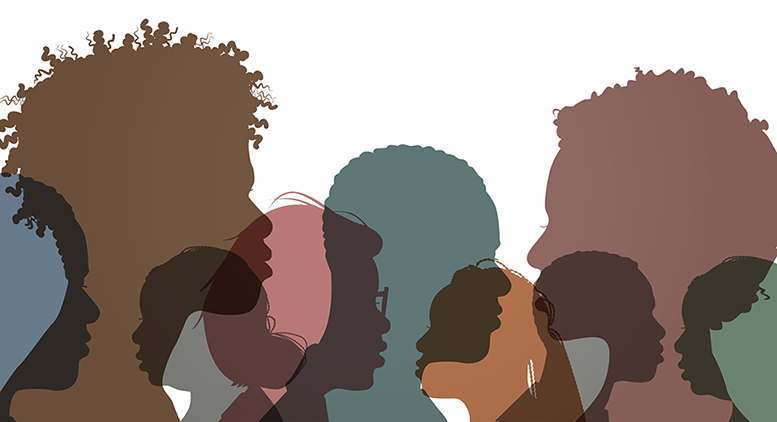When I was young, we often drove from Ohio to Louisiana to visit family. I recall my parents needing to plan strategically so that we would not have to stop in certain unsafe states, and we made sure to drive in daylight whenever possible. I remember the night my father was pulled over for “speeding” and hauled off to court in the back seat of a cruiser. We waited in the car on the side of the road. I remember the look on my mother’s face. The concern in her eyes. I knew I needed to be afraid.
I remember sitting in the back of a hot bus while raw eggs were tossed into the open windows. Grown men wiped the sticky slime from their eyes in silence.

I remember being called the n-word while at day camp. I cried because it sounded so ugly. I remember in college, being denied a rental because I might attract people with loud voices and music.
I remember books, dolls, movies with people that looked nothing like me. The implicit message was clear: I didn’t matter. I remember my first black doll and the strange feeling of joy she gave me. My first Black teacher. My constant struggle to fit in. Was I acting too Black? Too White?
I remember vowing to provide a different life for my daughters, yet even finding them a Black Santa was impossible, and Disney had still not discovered the beauty of a Black princess. I vowed to study, educate and use our stories to change the world. My backpack became heavier.
Trayvon Martin
On February 26, 2012 something changed. My window to the world splintered and the baggage I carried with me all those years became a burden I had not experienced before. On that day, Trayvon Martin was brutally murdered. A teen. Someone’s baby. Walking home in a hoodie with Skittles.
I watched his story unfold and became paralyzed as I saw his murderer walk away, with a smirk on his face. Although many tried to speak up and protest, after a few days America didn’t really seem to care much. It seemed that after all, he HAD posted a picture on social media that made some folks call him a criminal, and the phone witness who testified did not speak “proper” enough to convince the casual observer of her credibility. So, life went on despite the murder of a child who was simply walking home while Black.
It was then that I became more keenly aware of how troubled we remained as a people and a nation. I began to fear for my family and friends of color. What I had experienced early on had not disappeared, it just had new wrapping. Freddie Gray, Michael Brown, Sandra Bland, Eric Garner, Philandro Castile, Walter Scott, Laquan McDonald, Tamir Rice, Breonna Taylor, Ahmaud Arbery, George Floyd, Tyre Nichols. The list is too long. The scars are too deep. The pain remains invisible, yet intense. Although social media has given us a front-row seat to the violence and discrimination experienced by many Black and Brown people, these seats are expensive and can cost us our peace of mind, energy and mental health. Studies suggest that repeated viewing of Black deaths, including those at the hands of law enforcement, can traumatize the viewer-especially if he, she or they share the characteristics of the victims.
Through a teacher’s lens
Fast forward to 2023. I am a Black, female, teacher-educator who has been active in the field for more than 40 years. I have multiple degrees. Although I have taught in higher education for nearly 25 years, I have also taught toddlers, tweens, teens, Millennials, Gen-Xers, Boomers and more. Whether my students have been five or 50, I have viewed each one with the sincere belief that each one matters, and each has untapped potential. When I hear the phrase “All students can succeed,” it is much more than a slogan. It is a sincere belief that permeates my being and touches my soul. Regardless of the age, race, gender or economic status of my students, or the dreams we shared, I have never forgotten to treat them with dignity. I also never forgot, for even a day, that I was teaching while Black and carrying the baggage associated with that label.
I have always felt a heightened awareness and responsibility to uplift my students — especially those from underrepresented populations. Perhaps it is grounded in those memories hastily folded deep in my personal baggage, but I tend to see the world through their sometimes “foggy” lenses. I understand their battles because they are not much different than my own. When I carry my own history with me every day, it reminds me of the tremendous responsibility I have to acknowledge the bags each of my students carry into the classroom, particularly my students of color.
I know of current research that suggests African American students who have same-race teachers tend to experience more academic success than those who do not. Additionally, I am also aware that students of all colors and ages benefit from experiencing diversity in their teachers, classmates and curriculum. Sadly, I know there remains a significant shortage of African American teachers across this country in all grade levels, especially in higher education.
And so, my job in part is to be the voice of the voiceless. My job is to provide my students with perspectives that they may never have considered or had the courage to share. My job is to say things in ways that provide them comfort and bolster their confidence. My job is to help them truly believe that they too are worthy of becoming professionals. My job is to do what I can to ensure that my students of color believe in the importance of education. I want them to understand my own struggles along the way so that they too will commit to sustaining their efforts. I need to guide them toward a path to overcoming their obstacles, and completing their programs so that they can someday join me as colleagues. This, despite the many messages that tell them otherwise. And so, while I continue to do the job I love, I always adhere to a few self-imposed “musts”:
- I must remember to correct my colleagues who proudly pronounce that they “don’t see color.”
- I must ensure that I continue to insert parts of our history that have been routinely omitted in textbooks, regardless of the content I am teaching.
- I must remain cognizant of the fact that I am the first Black teacher that many of my students have ever experienced, regardless of their color or background.
- I must continue to use my well-developed code-switching skills to sustain my power and influence and encourage my students of color to do so as well.
- I must convince my pre-service students that learning about race, oppression and implicit biases is important for their own personal and professional successes as they work to become teachers.
- I must continue to dust off my tattered bags, clear my lenses and unwrap my gifts in order to help my colleagues create safe, inclusive, empowering environments for all students, but especially students of color.
- I must understand that the disproportionately small number of African American teachers in our schools will likely remain constant for some time, and therefore I must continue to use my voice to urge teachers to value the power of unheard stories.
- I must push back when political leaders suggest that our histories are unworthy to be shared.
- And, of course, no matter how tired or exhausted I become, I must never underestimate the power of my story to bring about positive change.

